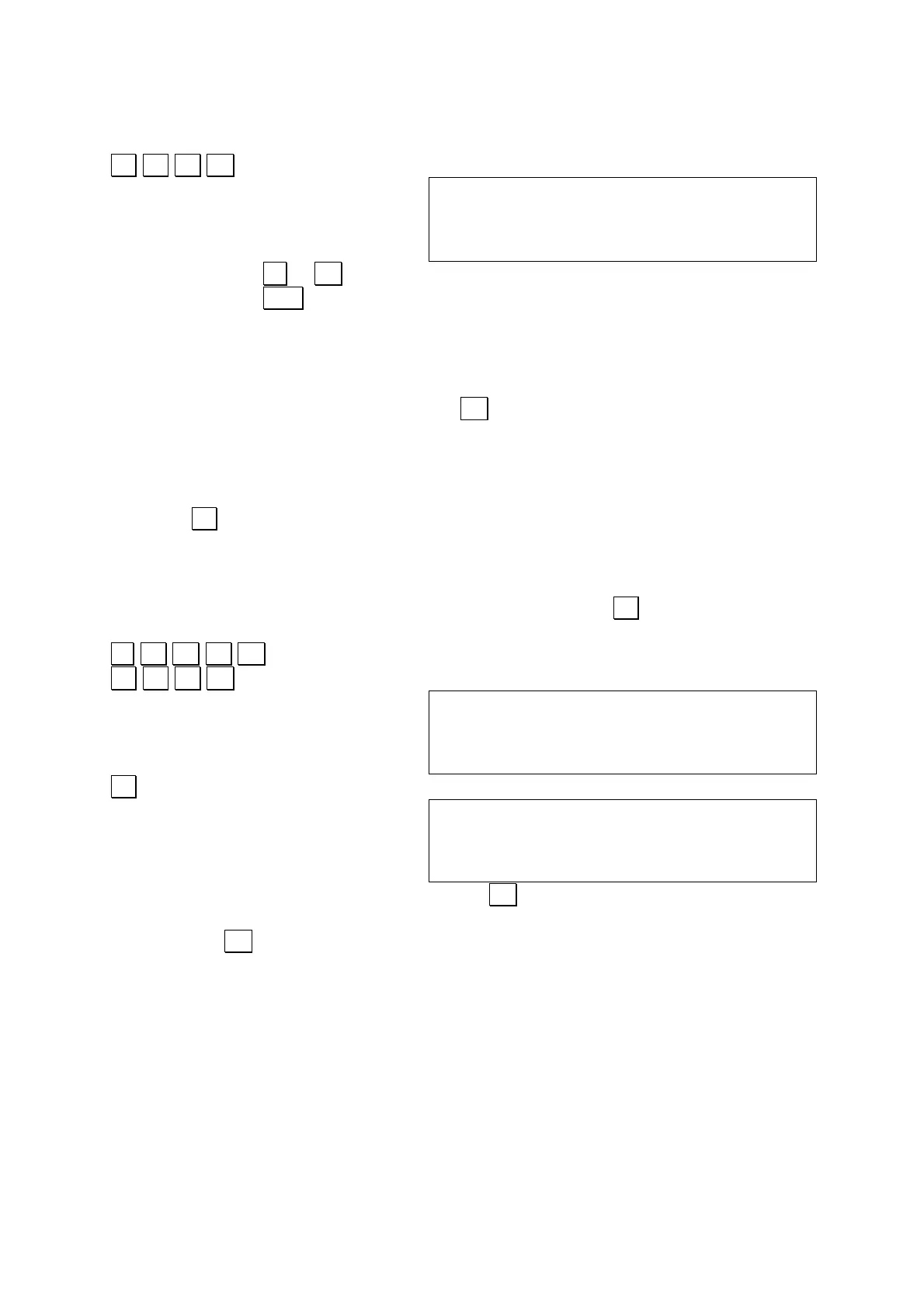To interrupt execution of the TRACE mode
Lets run again the program in TRACE mode:
.R U N . .
>run
(F1-5) printf(“HELLO¥n”);
Break?_
1. You can press T or . . to execute the line and carry on the TRACE mode.
2. You can press BRK to exit the program, but stay in TRACE mode. This is useful if
you want to re-run the program because you missed something.
To exit the TRACE mode
There are four different methods that you can use to exit the TRACE mode.
1. Enter the TROFF command and press . .. “TROFF” stands for trace off.
2. Exit the interpreter while entering the editor or the MENU mode. This
automatically exits the TRACE mode.
3. Switch the power of the computer OFF. This automatically exits the TRACE
mode.
4. Press N during TRACE mode execution when prompted “Break?_” to exit the
TRACE mode and finish executing the program.
Variable Test Function
During TRACE mode execution of a program, you can press D when prompted
“Break?_”.
.T R O N . .
.R U N . .
>run
(F1-5) printf(“HELLO¥n”);
Break?_
(F1-5) printf(“HELLO¥n”);
Break?d
var>
Entering the name of the variable followed by . . will give you the type and value of
the variable at this stage of the execution of the program.
Entering only . . will resume the TRACE mode execution.
6.2 Introduction to C
This chapter tells you about the important points and rules to remember when
creating C programs. Simply work with the example programs presented in this
chapter to become familiar with proper procedure. This chapter puts you on the route
to becoming a C programmer.
6.2.1 Outputting characters
Creating a program to output character strings
We have already some experience in chapter 6.2 with a few simple programs that
output lines of characters to the display. Here, let’s try understanding how it works.
